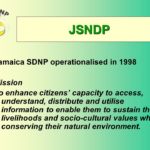In the last twenty years, we have witnessed a very rapid and dramatic evolution of ICTs at a pace perhaps unprecedented in history. This evolution, however, has come in a series of waves. First, we saw the advent of the Internet in the early 1990s, a network of networks that quickly gained global relevance -although uptake by developing countries lagged well behind initial expectations. By the of the millennium, we saw a second wave that essentially brought forward the application of Internet-based solutions for businesses, governments, and almost any other sector.
This wave ended suddenly with the so-called dot-com crash in March 2000. By 2004, Web 2.0 and social media emerged as the third wave of ICT innovations where user-driven content, interactivity, netw orking, and collaboration were the drivers. Finally, we saw the accelerated diffusion of mobile technologies come into play – beating Internet growth rates by far. Today, we have over 6 billion mobile subscribers (most in developing countries), 2.5 billion Internet users and over one billion social media users.
orking, and collaboration were the drivers. Finally, we saw the accelerated diffusion of mobile technologies come into play – beating Internet growth rates by far. Today, we have over 6 billion mobile subscribers (most in developing countries), 2.5 billion Internet users and over one billion social media users.
Based on the above, we can say that access to and use of ICTs is “democratized” -or, from a marketing perspective, is being “massified.” Being that as it may, what these four waves have in common is their claim that new ICTs end up empowering people by providing the platforms and networks that will allow them to participate in decision-making processes and other governance processes while giving voice to those who had none before.
Moreover, the difference between the “old” Internet and new ICTs is that now we supposedly have empirical evidence to back up such claims, as reflected by the so-called Arab Spring and other social movements that have emerged in both developed and developing countries. We all heard about Twitter and/or Facebook revolutions. But we should all take such claims with a grain of salt and two of pepper. Current research on these social movements seriously doubts the absolute validity of such perspectives.
From a democratic governance perspective, the critical question hinges on participation and inclusiveness.
While access to ICT networks is necessary to be empowered to participate, that does not necessarily mean that people are willing or ready to engage. Yes, new forms of communication, such as SMS, social networks, podcasts, blogs, etc., offer new opportunities for engagement and thus have the potential to foster inclusiveness in how development decisions are made. But this is not an automatic automagic (sic) process -even if new ICTs also substantially reduce access costs and thus lower traditional barriers of entry for engaging with others and meaningfully participating in governance processes.
While ICTs open new opportunities to foster inclusive participation, they do not actually entice people to engage and become more active in the public sphere. Nor do the latest technologies effectively tackle the so-called “democratic apathy” of citizens and stakeholders in industrialized countries. This is indeed not the situation in many developing countries where people usually have not had the chance to participate effectively in governance processes other than elections. At any rate, there seems to be a missing link between ICTs, old and new, and participation, new and old.
Let us look at crowdsourcing, which includes both Internet and SMS-based platforms. By its nature, crowdsourcing is centered on the wisdom of the crowds, where stakeholders provide inputs and, jointly, almost without knowing, generate information and knowledge in real-time. It is indeed a form of traditional surveys on digital steroids—and done at 1/100th of the cost of the former! It is also a great marketing tool.
The fascinating point about crowdsourcing is that it can effectively get down to the local level -especially using SMS and mobiles – where local stakeholders can meaningfully participate and see their own inputs count for some specific purpose or goal – reporting violence, human rights abuses, violence against women, electoral fraud, etc. This is precisely the incentive that gets people to participate in such processes, a stimulus made possible by the affordability and networking outreach of the new ICTs – my voice can be heard by millions, if not billions, in real time!
This is indeed the first critical step in empowering people through ICTs to participate in governance and other processes.
But there is also a crucial institutional gap here—a critical democratic governance factor. There is no doubt that ICTs are moving much faster than institutional modernization or change, and thus are putting tons of pressure on the latter to catch up. The same goes for fostering inclusiveness and participation using social media, the Internet or mobile technologies. There is a significant gap here.
While people are finding incentives to engage, the critical question is whether policy and decision-makers are listening or are even willing to listen. There are quite a few examples of them listening because they either have their own political agendas or have a keen interest in the new communication channels that have emerged and can be capitalized for political mobilization. But once they move on, the listening stops while the voices continue to be heard.
There is a need to create governance mechanisms that formally or institutionally require people’s voices and contributions to be part and parcel of crucial decision-making processes, especially those that will directly impact the lives of those engaging. In principle, this should not be optional, nor should it be up to the goodwill of any policy/decision-maker. If we are really serious about empowering people to participate, we must address this challenge, which is undoubtedly more significant than ICTs.
This does not mean that ICTs are not part of the solution. The same platforms that today are being used to capture stakeholder voices can be used by local and national institutions and organizations to listen to such voices and apply new technologies such as big data analytics, semantic web, and others to aggregate voice, suggest trends and identify priorities, among other things. What seems to be missing then are not the platforms, but the political will to make listening to people’s voices an integral part of the decision-making processes.
Crowdsourcing about this can perhaps help move this agenda forward.
Cheers, Raúl






